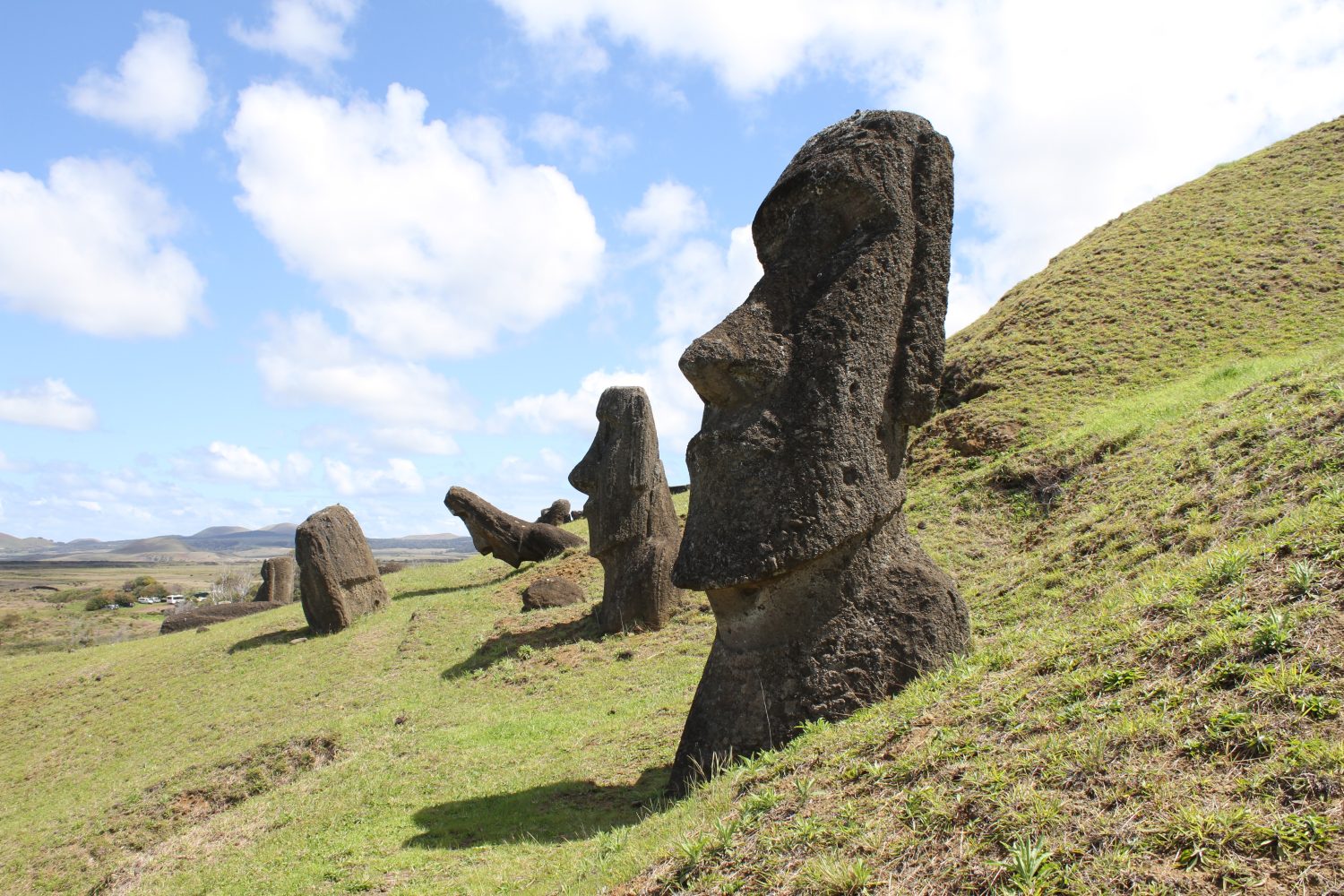
Visitors to Easter Island have described an almost magical vibe emanating amid the mysterious, ocean-facing maoi statues erected by its original inhabitants. But located as it is about 2,000 miles from either Tahiti or Chile, it’s also a land of hardship – especially during recurring droughts. Now drones are seeking to alleviate that aridity by searching for fresh water sources.
Parched residents of ancient Easter Island get relief from water-mapping tech
The recruitment of tech-toting drones to hunt fresh water sources on Easter Island is another astonishing encounter of ancient and modern times. Rapa Nui, as it it’s also known, was first reached by Polynesian explorers as early as 800 BC, Once settled, their manner of working the land – including the construction and transportation of the nearly 1,000 maoi statues – eventually resulted in environmental collapse. That left the island treeless, while other vegetation still struggles to survive on porous soil that quickly soaks rainfall up. Three small volcanic craters that collect water often dry out during droughts, leaving locals desperate to find new supplies.
Drones are now helping in that effort by finding fresh water sources rising up in surrounding Pacific Ocean.
Due to the same factors that cause rainfall to quickly seep into the ground, Easter Island also features flows of fresh water that surface in the sea from coastal seeps. Those explain why early European visitors to Rapa Nui delivered astonished reports of islanders and animals drinking directly from the Pacific and ending up no worse for it.
That still occurs today, especially during droughts, which is why experts from New York’s Binghamton University and the University of Arizona are flying drones to locate all Rapa Nui’s coastal seeps. And as part of that project, they’re trying to determine whether unearthing the origins farther in on land may provide future water options to thirsty islanders.
Drones beating satellites in locating fresh water sources
The researchers have equipped drones with thermal imaging sensors to locate the coastal fresh water sources. Insufficient image pixilation satellites produce don’t work in the task. It wasn’t even sure using drones would perform as well as they did in mapping coast seeps in Hawai‘i, which involved larger volumes than the plumes along Easter Island’s shores. Still, it was worth a try: Previous work mapping the spots required wading in on the often slippery, jagged rocks lining the island, and taking temperature and salinity readings by hand every 10 yards.
Drones, however, have proven themselves up to the challenge on Rapa Nui. Flights identify and analyze individual seeps far faster than manual surveying. As they do, the craft continue assembling a far more accurate and complete map of the entire system of flows from the island – even below the sheer cliffs on its nearly inaccessible western side. Perhaps. not coincidentally, the researchers say, position of moai statues – whose purpose and significance remain a hotly debated mystery – tend to correlate to the location of fresh water seeps.
Residents of the island still use those spots to draw fresh (albeit brine-tinged) water, though primarily for crops and livestock. The research using drones to map those fresh water sources now seeks to go further by learning how they function – and whether they may be more effectively used.
The thermal imaging approach is being directed at water reserves in Easter Island’s underground aquifer. Initial research has already discovered that during times of drought, flows from coastal seeps are the last reserves to show signs of depletion. The thesis being drawn from that is the island’s bedrock is so efficient in soaking rainfall deep down that its huge stores of water take years to finally join the streams leaking out to sea. If so, one option may be to use drones to find the heaviest concentration of those subterranean reservoirs, and – very, very judiciously – extract some of that in times if severe drought.
Photo: Thomas Griggs
FTC: We use income earning auto affiliate links. More.




Comments